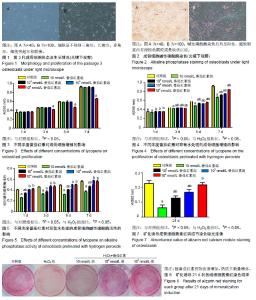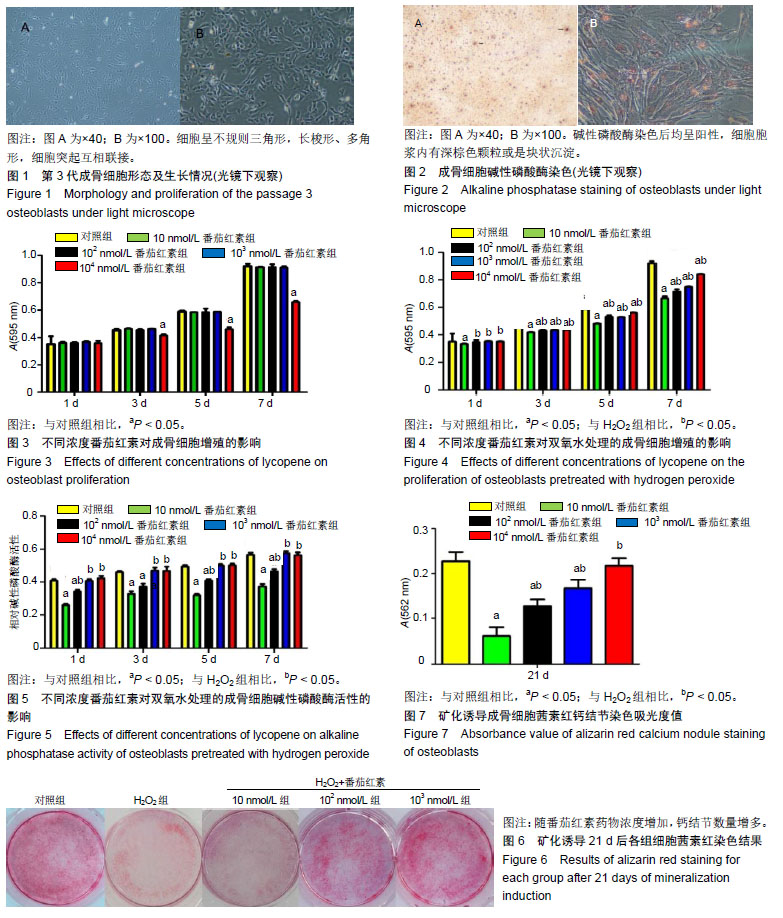| [1] |
Liu Cong, Liu Su.
Molecular mechanism of miR-17-5p regulation of hypoxia inducible factor-1α mediated adipocyte differentiation and angiogenesis
[J]. Chinese Journal of Tissue Engineering Research, 2021, 25(7): 1069-1074.
|
| [2] |
Wang Shiqi, Zhang Jinsheng.
Effects of Chinese medicine on proliferation, differentiation and aging of bone marrow mesenchymal stem cells regulating ischemia-hypoxia microenvironment
[J]. Chinese Journal of Tissue Engineering Research, 2021, 25(7): 1129-1134.
|
| [3] |
Geng Yao, Yin Zhiliang, Li Xingping, Xiao Dongqin, Hou Weiguang.
Role of hsa-miRNA-223-3p in regulating osteogenic differentiation of human bone marrow mesenchymal stem cells
[J]. Chinese Journal of Tissue Engineering Research, 2021, 25(7): 1008-1013.
|
| [4] |
Pei Lili, Sun Guicai, Wang Di.
Salvianolic acid B inhibits oxidative damage of bone marrow mesenchymal stem cells and promotes differentiation into cardiomyocytes
[J]. Chinese Journal of Tissue Engineering Research, 2021, 25(7): 1032-1036.
|
| [5] |
Li Cai, Zhao Ting, Tan Ge, Zheng Yulin, Zhang Ruonan, Wu Yan, Tang Junming.
Platelet-derived growth factor-BB promotes proliferation, differentiation and migration of skeletal muscle myoblast
[J]. Chinese Journal of Tissue Engineering Research, 2021, 25(7): 1050-1055.
|
| [6] |
Liu Bo, Chen Xianghe, Yang Kang, Yu Huilin, Lu Pengcheng.
Mechanism of DNA methylation in exercise intervention for osteoporosis
[J]. Chinese Journal of Tissue Engineering Research, 2021, 25(5): 791-797.
|
| [7] |
Deng Zhenhan, Huang Yong, Xiao Lulu, Chen Yulin, Zhu Weimin, Lu Wei, Wang Daping.
Role and application of bone morphogenetic proteins in articular cartilage regeneration
[J]. Chinese Journal of Tissue Engineering Research, 2021, 25(5): 798-806.
|
| [8] |
Ma Zetao, Zeng Hui, Wang Deli, Weng Jian, Feng Song.
MicroRNA-138-5p regulates chondrocyte proliferation and autophagy
[J]. Chinese Journal of Tissue Engineering Research, 2021, 25(5): 674-678.
|
| [9] |
Wang Yujiao, Liu Dan, Sun Song, Sun Yong.
Biphasic calcium phosphate loaded with advanced platelet rich fibrin can promote the activity of rabbit bone marrow mesenchymal stem cells
[J]. Chinese Journal of Tissue Engineering Research, 2021, 25(4): 504-509.
|
| [10] |
Zhou Jihui, Yao Meng, Wang Yansong, Li Xinzhi, Zhou You, Huang Wei, Chen Wenyao.
Influence of novel nanoscaffolds on biological behaviors of neural stem cells and the related gene expression
[J]. Chinese Journal of Tissue Engineering Research, 2021, 25(4): 532-536.
|
| [11] |
Ye Haimin, Ding Linghua, Kong Weihao, Huang Zutai, Xiong Long.
Role and mechanism of hierarchical microchanneled bone scaffolds in promoting osteogenesis and angiogenesis
[J]. Chinese Journal of Tissue Engineering Research, 2021, 25(4): 621-625.
|
| [12] |
Chen Yang, Huang Denggao, Gao Yuanhui, Wang Shunlan, Cao Hui, Zheng Linlin, He Haowei, Luo Siqin, Xiao Jingchuan, Zhang Yingai, Zhang Shufang.
Low-intensity pulsed ultrasound promotes the proliferation and adhesion of human adipose-derived mesenchymal stem cells
[J]. Chinese Journal of Tissue Engineering Research, 2021, 25(25): 3949-3955.
|
| [13] |
Yang Junhui, Luo Jinli, Yuan Xiaoping.
Effects of human growth hormone on proliferation and osteogenic differentiation of human periodontal ligament stem cells
[J]. Chinese Journal of Tissue Engineering Research, 2021, 25(25): 3956-3961.
|
| [14] |
Zhang Lishu, Liu Anqi, He Xiaoning, Jin Yan, Li Bei, Jin Fang.
Alpl gene affects the therapeutic effect of bone marrow mesenchymal stem cells on ulcerative colitis
[J]. Chinese Journal of Tissue Engineering Research, 2021, 25(25): 3970-3975.
|
| [15] |
Gao Shan, Huang Dongjing, Hong Haiman, Jia Jingqiao, Meng Fei.
Comparison on the curative effect of human placenta-derived mesenchymal stem cells and induced islet-like cells in gestational diabetes mellitus rats
[J]. Chinese Journal of Tissue Engineering Research, 2021, 25(25): 3981-3987.
|

